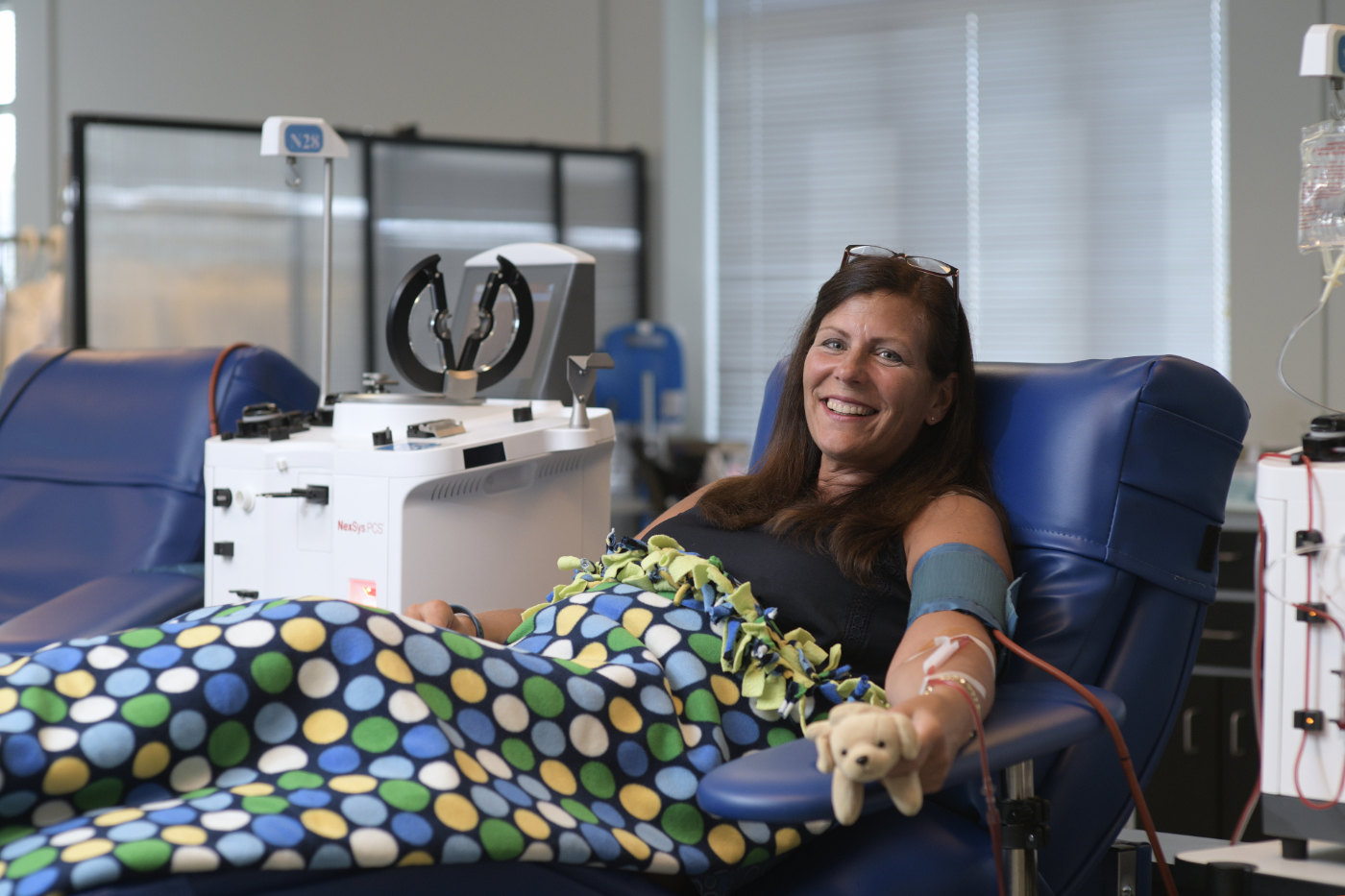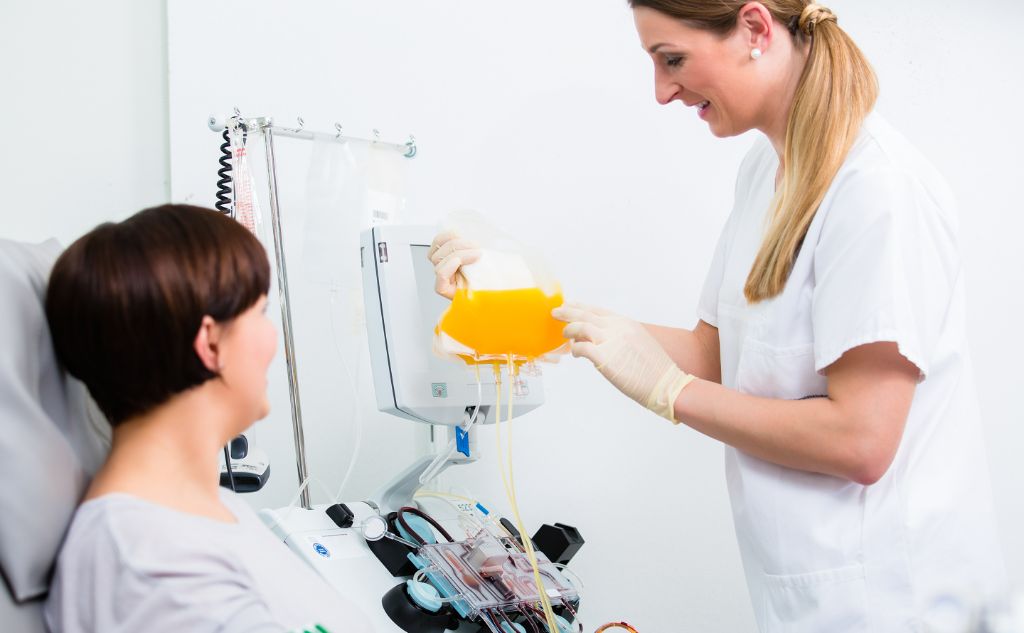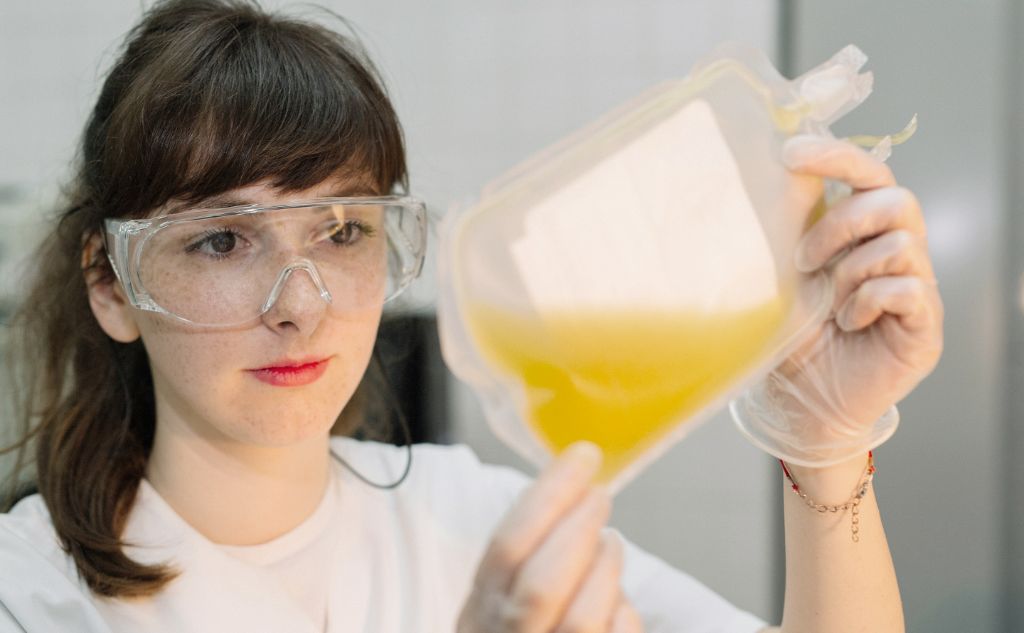Month: April 2024
Tips for donors
What to eat before donating plasma
Tips for donors
What to eat before donating plasma
April 26, 2024
Congratulations, you’re on the road to donating plasma! Donating plasma is a noble act that can save lives, but it’s essential to prepare your body adequately for the donation process. Proper nutrition plays a crucial role in ensuring a safe and comfortable plasma donation experience. In this guide, we’ll cover what to eat for breakfast before donating plasma, what not to eat, and what to eat in general before your plasma donation appointment.
What to eat for breakfast before donating plasma
Congratulations, you’re on the road to donating plasma! Donating plasma is a noble act that can save lives, but it’s essential to prepare your body adequately for the donation process. Proper nutrition plays a crucial role in ensuring a safe and comfortable plasma donation experience. In this guide, we’ll cover what to eat for breakfast before donating plasma, what not to eat, and what to eat in general before your plasma donation appointment.
What to eat for breakfast before donating plasma
As the saying goes, breakfast is the most important meal of the day. This adage is even truer when it comes to donating plasma! A nutritious breakfast can help stabilize your blood sugar levels, keep you energized, and minimize the risk of complications during plasma donation. Here are some breakfast options to consider:
1. Whole grains: Whole grain toast or oatmeal are excellent choices. They provide sustained energy and fiber to keep you feeling full.
2. Protein: Include lean sources of protein such as eggs, yogurt, or peanut butter. Protein helps maintain muscle strength and overall health.
3. Fruits: Opt for fresh fruits like bananas, apples, or berries. They provide vitamins and natural sugars for a quick energy boost.
4. Beverages: Though it may be hard to sacrifice your morning coffee or tea, it is best to limit your intake of caffeine before a plasma donation as it can lead to dehydration. Start your day with a glass of water or juice to stay hydrated.
What not to eat before donating plasma
Certain foods and beverages can affect the quality of your plasma and your overall well-being during the plasma donation process. Here’s what to avoid:
1. Fatty snacks and treats prior to your donation. These foods can have a negative impact on blood tests, potentially preventing you from donating.
2. Fasting before your donation. It is important you’ve eaten a healthy meal within a few hours before your donation.
3. Fatty foods to avoid include but are not limited to:
- Sweets/candy
- Burgers
- Potato chips
- Pizza
- French fries
- Ice cream
Remember that healthy fats are okay. These include avocado, fatty fish, eggs, nuts, cheese, and full-fat yogurt.
4. Avoid drinking alcohol for 24 hours before your plasma donation. Alcohol can lead to dehydration, making it difficult for you to donate.
What to eat and drink before a plasma donation
- Eat a protein and iron-rich meal no more than a few hours before your donation. You do not want an empty stomach! Protein-rich foods include but are not limited to
- Yogurt
- Chicken
- Eggs
- Beef
- Cheese
- Nuts
- Seeds
- Beans
- Iron-rich foods include but are not limited to:
- Chicken
- Ham
- Beef
- Certain breakfast cereals
- Beans
- Watermelon
- Turkey
- Broccoli & leafy greens
2. Much like with food, what you drink is an essential factor in the overall health of your blood plasma. Drink plenty of water before and after donating. Drinking water is so important because it directly affects how full your vein is and how your plasma is separated. Make sure you have plenty of H2O in the 12 hours before and after your donation.
Extra tips to prepare for your plasma donation
Though nutrition is key to improving your plasma donation, here are a few extra things you can do to make your experience even more comfortable:
1. Get a good night’s sleep before donating your plasma, as it’ll allow for a quicker recovery and a more plentiful donation.
2. Ensure your sleeves can be pushed up so the center team can easily access the veins in your arms.
3. Consider bringing a light sweater to keep warm during the donation process.
4. Bring any personal items that will help you feel as relaxed and comfortable as possible.
5. Pack your phone, a book, or headphones to help pass the time. (All KEDPLASMA centers have free WiFi!)
Following these tips and keeping yourself healthy will make you eligible to donate plasma and save lives. At KEDPLASMA, our donors are our priority, and we thank you for your continued contributions. We have 70 locations nationwide, find your closest center here.
FAQs
Tips for donors
Temporary deferrals and plasma donation: everything you need to know
Tips for donors
Temporary deferrals and plasma donation: everything you need to know
April 10, 2024
Plasma donation plays a crucial role in providing life-saving medical treatments for a variety of conditions. That’s why donating is an important and generous act. As a donor or an aspiring one, you may have heard about temporary deferrals, a necessary aspect of the donation process that ensures your health and safety as well as the one of your plasma recipient. Most deferrals are temporary. So don’t worry if you have been deferred; you will soon be able to donate again!
6 common reasons for temporary deferral
1. Recent illness
If you have recently been ill or are currently experiencing symptoms of illness (cold, flu, COVID-19, sore throat, for example), you may be temporarily deferred. This precaution prevents the spread of infection and ensures both your well-being and the one of the recipients of your plasma donation. That’s why it’s important to refrain from donating until you’ve fully recovered.
2. Tattoos
If you got a tattoo within the last 3-6 months, you may be ineligible to donate plasma. The waiting period typically depends on how long it takes for the tattoo to heal fully. The reason behind this deferral is that needles, especially if unclean, can carry bloodborne illnesses that may not be immediately detectable when your blood gets tested.
3. Medication, surgery, and medical procedure
If you are on medication but still want to donate plasma, consult the medical staff at your center. Certain medications, such as antibiotics or antidepressants, and some vaccines may not be compatible with the donation process, necessitating a temporary suspension. Additionally, some pain medications can affect platelet counts; however, you can donate plasma if you stop taking them 48 hours prior to your appointment. If you’ve recently undergone surgery or specific medical procedures, including dental work, you may be temporarily deferred to allow time for your recovery and to ensure your overall well-being before you resume donation activities.
4. Anemia and iron levels
If the hemoglobin test reveals that your hemoglobin level is lower than normal, it means you have a low red blood cell count. Anemia could therefore be a reason for temporary exclusion from donation. If you are a woman, your hemoglobin level must be at least 12.5 g/dL; for men, the minimum level is 13.0 g/dL. Below these values, you will not be able to donate. Low iron levels can also lead to a temporary deferral because insufficient levels may impact your well-being.
5. Pregnancy or recent childbirth
Being pregnant or having recently given birth can be another reason for your temporary deferral. Don’t worry! It’s a temporary condition that allows you time for recovery and protects your health and the one of your newborn.
6. Travels to high-risk areas
Have you recently traveled to regions with a high prevalence of infectious diseases (particularly those transmitted through blood)? Talk with your donation center because that could lead to a temporary deferral.
Temporary deferrals are a fundamental aspect of the plasma donation process, reflecting the commitment of donation centers to maintain high standards of safety and quality. As donors generously contribute to the well-being of others, understanding and respecting temporary deferrals contributes to the overall success of plasma donation programs. By working with donation centers and following established guidelines, you play a vital role in advancing medical treatments and improving the lives of individuals around the world.
Plasma Power
What is plasma used for?
Plasma Power
What is plasma used for?
Plasma is an important part of your blood that can be donated. But what is donated plasma used for?
Plasma is the liquid part of your blood. It contains water and a small yet crucial portion of solid substances, such as proteins and antibodies. You can donate plasma along with whole blood or on its own. Plasma donations are vital for shock and trauma treatments, and are also used to make life-saving medicines. Let’s discover the many uses of plasma in medicine.
What is plasma?
Plasma is a part of your blood, specifically the liquid one. In fact, 91-92% of it is water. The remaining percentage of plasma contains vital substances. In particular, these include:
Clotting factors, such as fibrinogen. They give the blood the right consistency and fluidity
Proteins, such as albumin. These have many functions in the body, including transporting oxygen in the blood, contributing to immune function, and enabling digestion
Minerals: They do not provide energy itself but help the organic mechanisms that produce the energy we need
Plasma provides nutrients, enzymes, and hormones to the body and helps remove waste.
Although it is an often-forgotten part of blood, it is the largest one, and its role, when donated, is often life-saving.
What is plasma used for in medicine?
The use of plasma in medicine reached a turning point during World War II when its benefits became clear. It is easier to transport than blood and particularly suitable for shock treatment, such as burns and wounds.
Today, plasma is not only used for emergency treatments but also for chronic, rare, and autoimmune diseases and research.
Your plasma donation can be used for many purposes. Here are some of its most frequent uses:
Accident victims with burns or blood loss from injuries
Excessive bleeding after surgery
People with autoimmune diseases
Amyloid light-chain amyloidosis: a group of rare diseases that cause dysfunctions and organic insufficiencies that can be fatal
Hemophilia: a rare genetic disorder caused by a deficiency of certain blood clotting proteins. A person suffering from a bleeding disorder will have an increased tendency to bleed externally and internally, both spontaneously and after trauma
Myeloma: a type of cancer involving plasma cells
Thrombotic thrombocytopenic purpura: a rare and genetic blood disorder. It causes a dangerous reduction in the oxygen supply to various organs
Von Willebrand disease: a condition that makes it more difficult for the blood to clot, causing bleeds that last for extended periods of time
Plasma transfusions help with excessive bleeding, and both its proteins and its antibodies can help treat the serious and chronic conditions just mentioned. Typically in these cases, the patient undergoes a treatment called plasmapheresis: the removal, return, or exchange of plasma. This is done with the help of a special machine.
However, the use of plasma for research purposes is equally important, since plasma-derived medicinal products are developed thanks to it.
In conclusion, the plasma you donate is essential for emergencies, but also to help provide the key ingredient for therapies that improve the quality of life of patients suffering from various rare, chronic, autoimmune and genetic diseases.
FAQs
Tips for donors
How to improve plasma donation eligibility
Tips for donors
How to improve plasma donation eligibility
In its various forms, donation is an expression of reciprocity and solidarity. Each of us can help improve the lives of others by saying “yes” to plasma donations. Thanks to your gift, many patients can receive treatments that would otherwise be impossible for them to obtain.
To help you continue donating over time, we have compiled some practical tips to help you maintain your donor eligibility.
Good practices to improve your plasma donor eligibility
Because the donation process can be done frequently and accompany you throughout most of your life, it can be useful to learn and implement some practices to improve your plasma donor eligibility.
1. Maintaining a healthy weight for plasma donation
Did you know that your weight has an impact on your donation? If you weigh under 110 pounds, plasma donation could be considered too much of a strain on your body. If you are a petite person and hover around that weight, track your weight to stay above the cut-off line and help you feel your best while donating plasma.
You can maintain the right weight for donation by incorporating proteins (try to consume between 50 and 80 grams of protein per day) and by choosing foods that lower your blood pressure and keep cholesterol levels low (such as whole grains, fish, legumes, nuts, berries).
Monitor your weight regularly to identify any changes, and adjust your diet or exercise routine if necessary. Please keep in mind that your health always comes first. If you feel unwell during your donation, immediately inform your donation center staff.
2. The impact of lifestyle choices on plasma donation
Consuming alcoholic beverages may impact your eligibility for plasma donation.
Therefore, it is advisable to avoid them both before and shortly after donating. Alcohol can lead to dehydration, lower your blood pressure, and compromise the quality of your plasma. Generally, it’s best to moderate your alcohol intake as it can affect the donation process.
As for smoking, try to refrain from doing so before your appointment and for at least two hours afterwards to reduce the risk of dizziness or fainting. While there are no strict rules preventing smokers from donating plasma, the combustion process of cigarettes results in donors inhaling higher quantities of carbon monoxide and carbon dioxide. These substances are transferred into the blood, where they enter red blood cells and bind to hemoglobin, leading to less oxygenated blood. The diminished vitality of red blood cells could potentially disqualify you from donating.
3. Medication, substance use, and plasma donation
In general, taking medication does not make you ineligible for plasma donation. However, some therapies may not be compatible with the process and may lead to a temporary suspension. This is the case, for example, with certain medications (such as antibiotics or antidepressants) and some types of vaccines. Also, some pain medications can affect your platelet count. You can still donate if you are able to stop taking them 48 hours before donation.
If you are taking medications but still wish to donate plasma, here is what you can do:
- Communicate with your center’s medical staff: Before donating plasma, inform them about the medications you are currently taking and inquire if there are any specific contraindications to donating plasma.
- List your medications: When you go to donate plasma, provide a comprehensive list of the medication you are taking. This will help the staff better assess your eligibility.
The use of cannabis does not disqualify an individual from donation and there is no data that specifies how long a donor should wait between cannabis use and plasma donation.
4. Prioritizing safe practices for plasma donation
Engaging in safe sexual practices is not only important for your overall health, but also for maintaining your eligibility as a plasma donor.
Sexually transmitted diseases like HIV and hepatitis can lead to temporary or permanent exclusion from plasma donation activities. So, remember to:
- Use condoms during sexual intercourse to prevent the transmission of sexually transmitted diseases.
- Be honest during your plasma donation screening process: being transparent about potentially risky sexual behaviors could make a huge difference in safeguarding the health of the recipient of your plasma.
5. Navigating tattoo decisions as a plasma donor
Are you thinking about getting a new tattoo? Consider that your new ink might have repercussions on your eligibility to donate plasma. In extremely rare cases, if the needle used to ink the tattoo was not properly disinfected, it could cause an infection that is not immediately detectable in the bloodstream. To protect the already vulnerable recipient of your generous plasma donation from potential infection, you will likely be temporarily deferred. This allows time for your tattoo to fully heal and ensures you have not contracted any infections.
To minimize the impact of your new tattoo on your plasma donor eligibility, consider these tips:
- Have your tattoo done at a fully licensed establishment in the US.
- Avoid getting a tattoo on your inner arm, where you connect to the plasma donation machine.
- Try to schedule your tattoo when you plan to donate less frequently.
Donation Experience
Women and plasma donation
Donation Experience
Women and plasma donation
Plasma donation is a safe and important process that helps save countless lives. As a woman, you might wonder whether your physiology or life stages affect your ability to donate plasma frequently.
Though there are few differences in terms of donation frequency and other characteristics between men and women, this article covers the key considerations you should take as a female donor.
Donation frequency for women donors
Whether you are a man or a woman, you can donate plasma twice within a seven-day period with at least 48 hours between donation visits.
The volume collected depends on body weight, following the guidelines for plasma collection:
- Donors weighing between 110–149 pounds (approximately 50.0–67.7 kilograms) can donate 625 milliliters (ml) of plasma, which weighs about 640 grams (g).
- Donors weighing between 150–174 pounds (approximately 68.2–79.1 kilograms) can donate 750 ml of plasma, which weighs about 770 g.
- Donors weighing 175 pounds or more (approximately 79.5 kilograms and above) can donate 800 ml of plasma, which weighs about 820 g.
These volume limits are set to guarantee your safety while also providing an adequate supply of plasma for medical needs.
You might have heard that women can donate less frequently than men. This only happens because statistically, women get more temporary deferrals due to pregnancy or other medical reasons, but in general, there is no reason to worry. You can donate as often as your center indicates as long as you are healthy and follow the standards for donation.
Health benefits of plasma donation for women
Doing good is good for you if you believe in the power of giving back. Regular donation helps you keep track of your health parameters like blood pressure, pulse, temperature, and weight. This may help reduce bad cholesterol (LDL) and increase good cholesterol (HDL) levels.
In addition, donating plasma can provide a mood boost from helping others, increasing your sense of service to the community and your mental health.
Plasma donation, pregnancy and breastfeeding
If you are pregnant, unfortunately, you cannot donate plasma. This rule was put in place so that you can save all your energy for you and the baby until the end of the pregnancy. After delivery, you should wait at least six weeks to restore all your blood parameters to their previous levels before donating plasma again.
What if you breastfeed after six weeks? You can donate if your doctor allows you to, according to the eligibility criteria that apply to all women.
Menstruation and plasma donation
Worried about donating during that time of the month? You can donate plasma during your menstrual period if you feel well and don’t have any health issues. In any case, if you are a frequent donor and a woman, it is always a good idea to regularly check your iron levels to make sure you don’t suffer from anemia.
Menopause and plasma donation
There are no limitations regarding plasma donation once you have reached menopause if you feel fit and well on the day. You can also donate plasma if you are taking hormonal replacement therapy HRT or other complementary, herbal, or homeopathic alternatives, to alleviate menopause symptoms.
Rh negative women and the Anti-D program
In addition, if you are an Rh-negative woman – which means that your blood type is negative and your blood cells lack the Rh protein called the D antigen – you can donate plasma for the Anti-D Program to prevent hemolytic disease in newborns. This is a condition where a mother’s immune system attacks her baby’s red blood cells if they are Rh-positive while she is Rh-negative.
Other health considerations
Conditions like anemia, which often affect women more than men, may affect your donor eligibility. Even though plasma donation has lower iron requirements than whole-blood donation, keeping track of your hemoglobin levels is always a good idea for your health.
Overall, plasma donation is a rewarding experience that all women can easily do as long as they prioritize their health and well-being.
FAQs
Plasma Power
What does plasma do for your body?
Plasma Power
What does plasma do for your body?
Plasma is the largest component of blood and performs many vital functions. What is plasma essential for?
Blood is essential to our bodies: it carries nutrients such as fats, proteins, and sugars, removes waste products, helps heal wounds, and distributes heat. Blood has many components, most notably a liquid part called plasma and a solid part that contains red blood cells, white blood cells, and platelets. The latter are the best known, but plasma itself plays a fundamental role too. What is it made up of, and what does it do for your body?
The difference between blood and plasma
Whole blood flows through our veins, and it makes up about 7-8% of our body’s weight. Typically, the male body contains up to 12 pints of blood, while the female body contains up to 9 pints.
Whole blood contains:
Plasma
Blood cells include red blood cells, white blood cells, and platelets
Therefore “blood” refers to the solid part, and “plasma” refers to the liquid part. The difference between blood and plasma is important when donating: you can donate whole blood or just a part of it, plasma.
Both whole blood and plasma are in high demand, especially in emergency medicine: they are often needed to treat trauma, injuries, and burns.
In addition to helping in cases of emergencies, plasma is also used in the treatment and research of rare, chronic, and autoimmune diseases.
Where does plasma come from?
Plasma is first formed in the embryo thanks to the umbilical cord. As the body develops, plasma proteins form in the soft tissue of the bones, called bone marrow. Plasma cells regenerate quickly, so donating plasma is completely safe.
The main component of plasma is water, and it comes from the water absorbed through the digestive system.
When separated from the rest of your blood, it appears like a yellowish liquid that has the color of straw.
What does plasma contain?
As we have seen, plasma is the liquid part of the blood, so its main component is water. It makes up for 91-92% of plasma, which is why drinking plenty of water after a plasma donation is highly recommended.
The remaining 7-8% contains several substances essential for your health and for the well-being of your body. It consists of:
Nutrients, such as proteins, fats and sugars
Coagulants that help the clotting process
Immunoglobulins that help fight infections and pathogens in general
A small amount of: enzymes, hormones, vitamins
What does the plasma in your blood do?
Both whole blood and plasma play a fundamental role in the functioning of our bodies. Specifically, plasma is responsible for:
Blood coagulation to help your wounds or cuts to heal
Defense against pathogens such as viruses, bacteria, or fungi because it contains antibodies, a special type of proteins that keep you from getting sick
Transport of nutrients, minerals, and hormones that fuel your body and regulate functions such as sleep, fatigue, and hunger
Body temperature regulation, which needs to be stable
Removal of waste products: your blood is like a river that carries waste products to organs such as the liver or kidneys for elimination
Plasma performs incredible functions for the body. By donating this precious ‘life-source’ you are helping people who have suffered some kind of trauma or whose own plasma cells don’t function as they should. Your donation helps re-regulate these fundamental processes, greatly improving the quality of life of patients worldwide.
FAQs
Tips for donors
Resting before and after plasma donation: why it’s crucial for donors
Tips for donors
Resting before and after plasma donation: why it’s crucial for donors
Plasma donation is a generous act to help people in need. As a donor, it is important for you to feel at your strongest on donation day and that is why you should put rest, both physical and mental, at the center of your preparation.
To ensure an even smoother donation experience and quick restoration of your energy levels, follow the following tips.
Before Plasma Donation
Get a good night’s sleep
The main form of rest is, as you probably guessed, sleeping. Aim for around 8 hours of sleep the night before your donation to feel like you have plenty of energy. If you are well-rested, your body can cope better with the stress of donation and minimize the feeling of dizziness or tiredness that can sometimes happen.
Get ready
Hydration is key to improving your donation experience! Remember to drink a lot of water and avoid caffeinated and alcoholic beverages, because dehydration can increase the risk of fainting during your plasma donation. Having a balanced meal before your donation can also help stabilize your blood sugar levels and prevent dizziness or light-headedness.
During Plasma Donation
Fainting
If you are very tired on donation day, you could risk feeling faint during or after giving plasma. To prevent this from happening, you can follow the following steps during the donation process:
- Practice deep breathing exercises to help calm your nerves and maintain steady oxygen levels. This can prevent dizziness and fainting episodes.
- Remember that crossing your legs can restrict blood flow and increase the risk of fainting, so keep your legs uncrossed and relaxed during the donation process.
- If you start feeling light-headed or unwell, don’t hesitate to inform your center staff immediately. They are trained to assist you and can take the necessary steps to ensure your well-being.
Can I donate plasma with no sleep?
In theory, you can. But remember that even if you feel tired, donors cannot sleep during the actual donation process. Being alert and awake ensures the safety and efficiency of the donation process, so try to get some shut-eye before coming to your center!
After Plasma Donation
Rest immediately after the donation
Take your time getting up from the donation chair. Rest for around 5 minutes in the donor chair to make sure you feel well and are ready to get up. Once you are up, relax in the refreshment area for 15-20 minutes before leaving the donation center. Should you feel dizzy, remember your center staff is always there to help. You can also drink or eat something to rehydrate and reinforce your body before leaving the plasma donation center.
Can I work out after donating plasma?
Unfortunately, no. For the rest of the day following your donation, it is crucial to avoid strenuous activities. Do not lift any heavy objects or go to the gym for an intense workout. Self-care and rest are important to help your body recover faster from the donation process.
By following these practical tips, you can guarantee a safe and comfortable plasma donation experience while contributing to a vital cause. So do not forget to take your well-deserved rest next time you donate!












